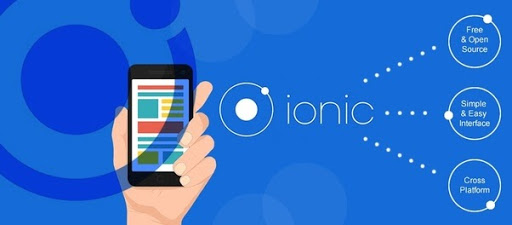
JavaScript, CSS, and HTML are some of the main technologies that help you to build robust app solutions. So, if you are looking to build smart web applications for your business, then I advise you to jump to my idea of cross-platform and open-source development frameworks right away.
Here is the list of the tech stacks for app developers to use in 2020.
1. Create Mobile-Friendly Apps With React Native

React Native is a popular cross-platform framework that has been launched by Facebook in 2013. And, it is always in the favored list of our team of app developers. It can be useful for your business too because React Native allows your app to follow a model coded in a language native for each platform. And, thanks to its library, you do not need to create separate apps for iOS, Android, and the web.
Another good thing about the React Native Development is it has sets of pre-written codes that help developers in adding specific functionalities to your app with fewer bugs on the way, and for less money.

Few Examples:
Myntra (Online Shopping Industry)
Myntra shopping portal makes it easier for you to shop on mobile. The best part is their presentation of catalogs, profiles, and order management. Using React Native, Myntra is offering an amazing UI and UX to their users.
Instagram (Messaging)
With React Native it’s really easy for the Instagram app to make it maintenance on both iOS and Android.
Bloomberg (Finance Industry)
By adding React Native to their app development, Bloomberg achieved simultaneous updation of the app for cross-platforms.
2. Flutter for Building Smart Business Apps

Flutter was launched by Google and is one of the best platforms for open-source and cross-platform mobile application development. It well suits the development of hybrid apps and enables smooth and easy development of iOS and Android apps. It is based on Dart, which is an object-oriented programming language. Flutter makes the use of the Skia which is a 2D rendering engine to develop the visuals. These visuals make your app look good and feel great with advanced UI elements.
When coding with flutter you can use it in a variety of IDEs (Integrated Development Environments). You can also use different themes for Android and iOS.
Here are some popular apps made with Flutter:
Alibaba (E-commerce)
The Alibaba eCommerce app is a place for global trade and is totally based on the Flutter that allows its users to buy products from suppliers around the world.
Watermaniac (Health and Fitness)
Watermaniac is a health and fitness app that enables its users to track the amount of water they drink and send customized notifications to remind users about drinking water.
Cryptograph (Finance)
CryptoGraph app provides data of around 1600 cryptocurrencies such as Bitcoin, Ethereum, etc. The app is based on Flutter and also allows users to select and add coins to favorites for easy tracking, and more features are there.
3. Xamarin MFactor

When talking about Xamarin apps, you must go with the trends. Like this year, Xamarin launched the MFactor which is a Visual Studio for Mac extension that can be used for the development of useful business apps for Android, iOS, and Windows. MFactor suggests static, grid rows, columns, image assets, and much more. In other words, it helps Xamarin developers to save a lot of their time and efforts.
Xamarin popularity has been taking the world by storm and it has grown to over 1.6 million developers across 120 countries. Xamarin app development is the choice of over 15,000 companies in the fields of healthcare, transport, power & energy, transport, media, and many more.
Few examples:
Alaska Airlines (Travel Industry)
Alaska Airlines’ uses Xamarin mobile app and gives their users the options to explore and book trips in a hassle-free way through airports.
OLO Food App (Food Industry)
OLO is an online ordering food application by Xamarin. It helps OLO users to find restaurants and different cuisines. Users also are given the ability to track their food orders live on the app.
The World Bank (Banking Industry)
The World Bank has built its own app called the Survey Solutions which is based on Xamarin. It is a tool for conducting surveys that manage, collects, sort, and aggregates data for the World Bank. The app helps in getting a fair insight into market updates and customer reviews for banking products and other updates.
4. Ionic V.4

Ionic's new version (v.4) supports functions like animations, UI library distribution, supporting Angular tooling, bug fixes, special pages, order flow, and even more. According to market reports, Ionic is the best framework used for the development of mobile apps and approximately 25,993 applications use Ionic as of 2019-20. And, the best part is — it is free of cost.
No doubt, Ionic is regarded as one of the best frameworks for the development of business apps. What’s more interesting to note is that it can work well with platforms like Angular, PhoneGap, and Cordova.
Some examples of apps built with Ionic:
McDonald’s Turkiye (Hotel Industry)
We all know that McDonald’s pays a lot of attention, time, and effort to maintain their consumer base. McDonald Turkiye is a food ordering app based on the Ionic platform and gives you awesome deals and promotional offers. In turn, McDonald receives huge applause from customers.
MarketWatch (Finance Industry)
This is a free news and market data app for Android and iOS users. Using MarketWatch you can have round the clock access to industry news, stock market quotes, and much more.
Sworkit (Health Industry)
Sworkit app is based on Ionic and is compatible with all of your iOS and Android devices. It offers you a range of exercises also you can set the length of your workout with the type of exercises you requested.
5. Framework 7

Framework7 is another best choice for free and open-source mobile application development. It is powered by Apache Cordova with native interface elements. This tool allows the recreation of standard iOS designs and Google’s Material Design patterns to change the “native look” that mobile users expect.
Framework7 helps developers make copies of iOS designs and allows you to build apps on any platform — PWA, Cordova, and ELECTRON. Framework7 comes with the ready to use elements and widgets like popup, dialogs, form elements, list views, side panels, and more.
Few examples:
Collect (Documents)
With the app like Collect, you need not worry about storing your documents being spread over multiple apps. The Collect is based on Framework7 and capable of handling information and documents with its features like built-in rich text editing and more.
Ad-Lister (Ad Industry)
Ad-Lister is an app that helps manage around 2,823 eBay stores. The app allows small to large scale eBay business sellers to focus on driving more sales and saving their time.
YouBeep (Mobile Shopping)
YouBeep is an app for mobile shopping that helps reduce your checkout time and improve the overall customer shopping experience. It is best to use for online retailers looking to improve their customer satisfaction.
Wrapping it Up!
Now, you’ve reached the end of the cross-platform and open-source mobile application development tools. As of this moment, you’re still wondering whether which one is the right tool for your business, then I suggest you take this list for your reference.
Again thanks for reading! If you have ever tried any of the technology stacks, please share your views in the comments section. Or, if you’re excited to try a new one out, then let me know.
Or, if you are looking to hire web developers from a reputed and reliable development company, you can easily get your queries to Syncrasy Tech.


john_huang
Framework 7 is very cool.